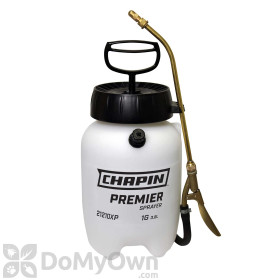
Virginia Buttonweed is one of the most common invasive weeds found in lawns throughout the Southeast and East Coast of the United States. This low-growing weed spreads by seeds, roots, and stems, allowing it to withstand many common weed treatments. But there is a way to combat the weed.
Read below to learn how to get rid of Virginia Buttonweed.
Apply a Post-Emergent Herbicide

Weeds that have already appeared in your lawn can be treated with a post-emergent herbicide. There are two types of herbicides to choose from.
Choose a Selective Post-Emergent Herbicide
A selective post-emergent herbicide will target the weed itself but will have very little effect on the surrounding foliage.
Selective herbicides should be applied in April or May, when Virginia Buttonweed first appears in your lawn, to have the greatest impact possible. In mid-summer, when the weed is fully grown and strong, you will need multiple applications to have any effect on the weed. Consult the label of your herbicide for how often to reapply.
Pro Tip
Select an herbicide that is labeled for your grass type to minimize the amount of damage to the turf surrounding the weed. Using an herbicide that is not labeled for your turf type may result in some wilting or burning to your turf.
Products needed for Step 1A
Choose a Non-Selective Post-Emergent Herbicide
A non-selective post-emergent herbicide will damage almost any plant it is applied to, including weeds like Virginia Buttonweed. Non-selective spot treatments can be more powerful and require less applications to be effective, but they will also affect turf and other plants surrounding the weeds.
Products needed for Step 1B
Apply Your Post-Emergent Herbicide
After you select your post-emergent herbicide, follow the instructions on the label for mixing instructions. Add water and your herbicide in a hand pump sprayer or backpack sprayer and agitate to combine. Be sure to wear gloves and long-sleeves while mixing and applying.
After your mixture is complete, spray your post-emergent on the weed. Be sure to spray as much of the weed as possible, but do not apply to the point of dripping or runoff.
Apply during clear weather conditions with no rain in the forecast and when wind is low. Herbicides will need to dry for at least six hours before any rainfall to be effective.
Do not apply when temperatures are above 85 degrees as the treatment will not be as effective and may burn your turf.
Products needed for Step 2
Reapply as Needed

It can take 7-10 days before you see any effect on the weeds and up to 3 weeks before the weeds fully die. Consult the label of your post-emergent herbicide for how often to reapply to be fully effective.
Be sure to properly dispose of any remaining herbicide mixture according to the product label and your state regulations. Do not store the remaining mixture in your sprayer.
The best way to get rid of Virginia Buttonweed is to prevent it from growing in the first place. Click the right arrow below to read our guide on How to Stop Virginia Buttonweed from Growing.
If you have questions about selecting product or removing Virginia Buttonweed from your lawn, give our lawn care experts a call at 866-581-7378 or email us at [email protected].















